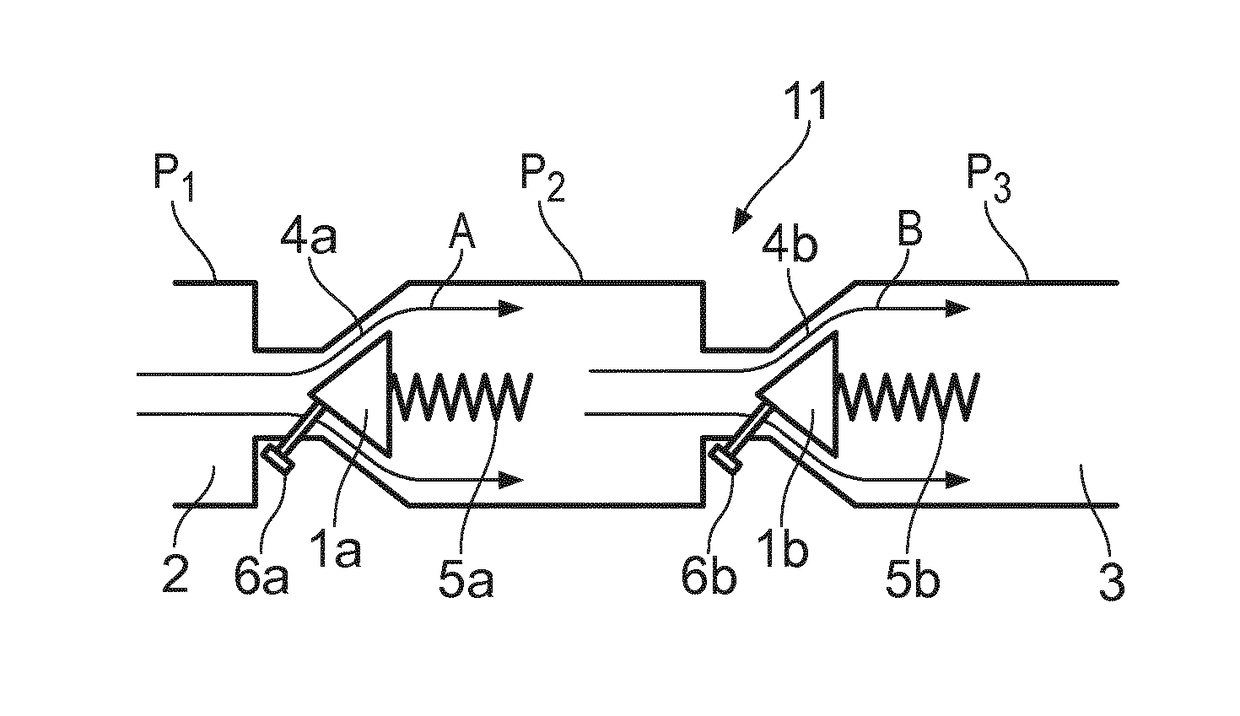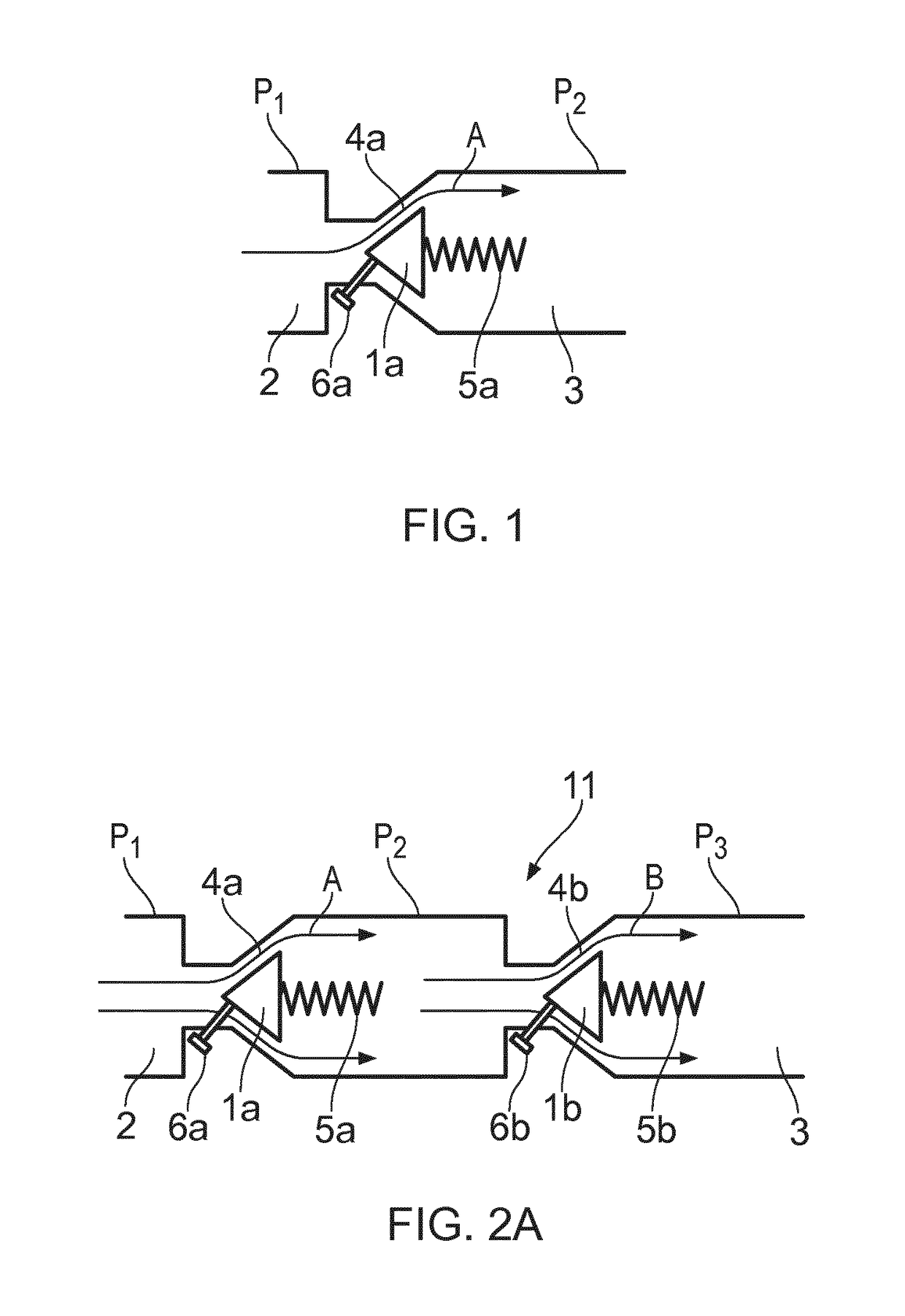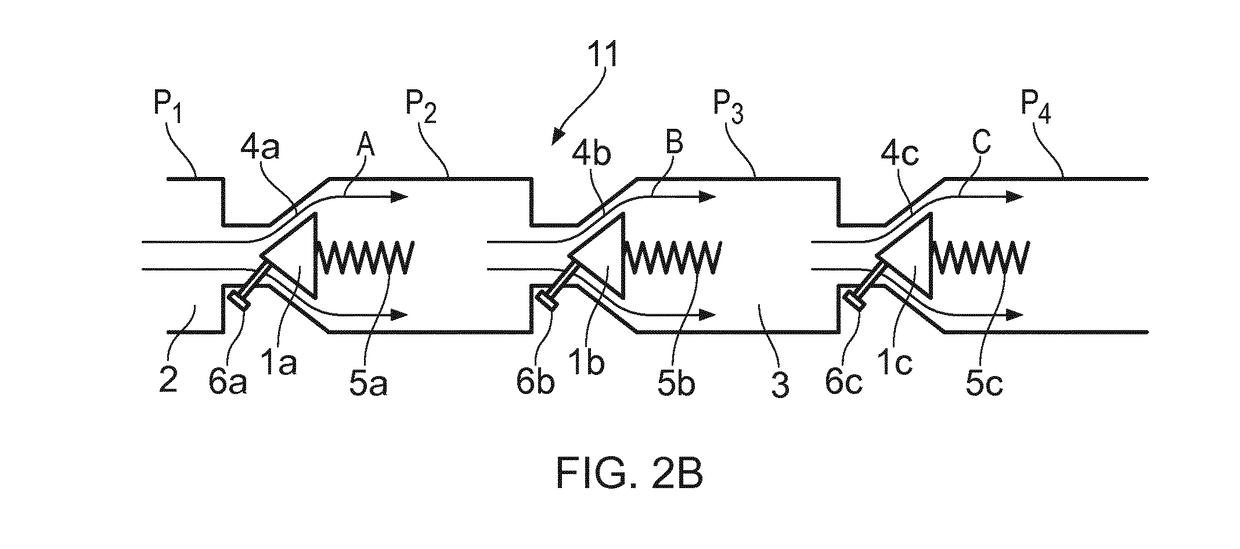Method and valve assembly for flushing of debris
- Summary
- Abstract
- Description
- Claims
- Application Information
AI Technical Summary
Benefits of technology
Problems solved by technology
Method used
Image
Examples
Embodiment Construction
[0056]A prior art flow regulating unit is shown in FIG. 1. The flow regulating unit 1a has an inlet 2, here shown as an inlet channel, with an inlet pressure P1 and an outlet 3, here show as an outlet channel, with an outlet pressure P2. The flow regulating unit 1a is arranged with an opening 4a for regulating a flow A into the outlet 3 (which may be connected to a well or a well area connected to the well). The inlet pressure is larger than the outlet pressure, thus providing a pressure drop over the flow regulating unit 1a. The flow regulating unit 1a is arranged with a spring element 5a to regulate the opening 4a in response to the pressure difference over the flow regulating unit 1a. The spring element 5a is set to resist compression in accordance with the pressure difference occurring during normal fluid flow through the opening 4a.
[0057]As the skilled person will realize, a preloading arrangement capable of providing resistance until a certain pressure level is obtained and t...
PUM
 Login to View More
Login to View More Abstract
Description
Claims
Application Information
 Login to View More
Login to View More - R&D
- Intellectual Property
- Life Sciences
- Materials
- Tech Scout
- Unparalleled Data Quality
- Higher Quality Content
- 60% Fewer Hallucinations
Browse by: Latest US Patents, China's latest patents, Technical Efficacy Thesaurus, Application Domain, Technology Topic, Popular Technical Reports.
© 2025 PatSnap. All rights reserved.Legal|Privacy policy|Modern Slavery Act Transparency Statement|Sitemap|About US| Contact US: help@patsnap.com



